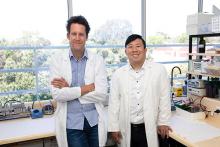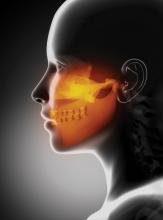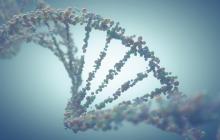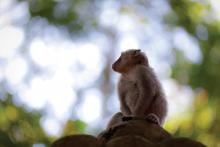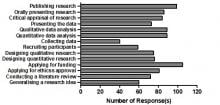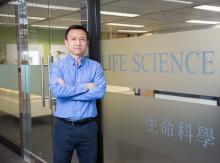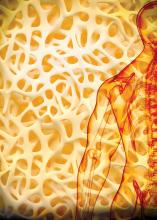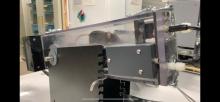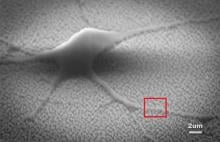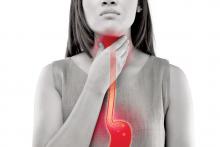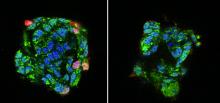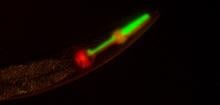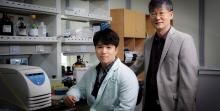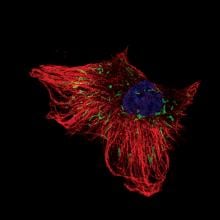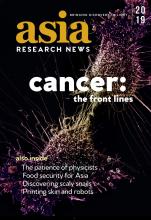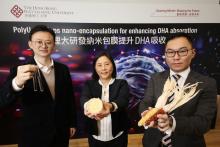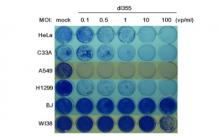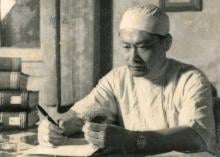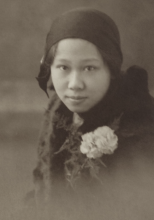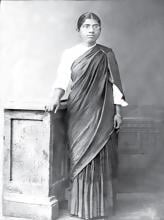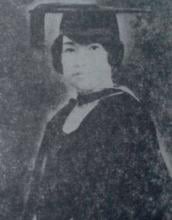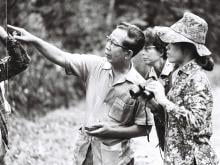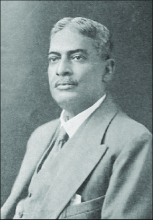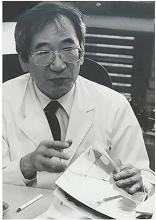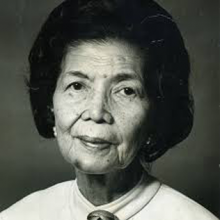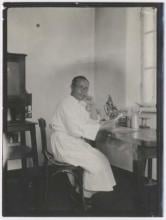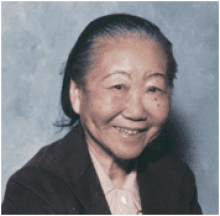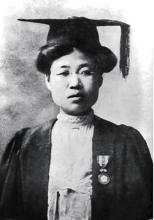Medicine
News
27 Mar 2019
A major advancement in pioneering technology based around the use of an artificial womb to save extremely premature babies is being hailed as a medical and biotechnological breakthrough.
21 Mar 2019
Researchers at Universiti Teknologi MARA reported in the journal Medicine a rare case of hepatocellular carcinoma cells migrating from the liver and settling in the jawbone and shoulder blade of a 61-year-old man.
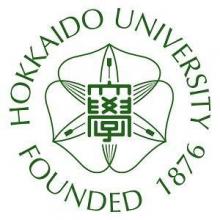
20 Mar 2019
The drugs aided retrieval of long-term object memories in both mice and humans.
14 Mar 2019
A new method to diagnose cancer cells inside lymph nodes could allow doctors to treat cancers before they spread around the body.
14 Mar 2019
A new mouse model accurately mimics diabetic kidney disease in humans, suggesting new approaches for treatment.
12 Mar 2019
The Hong Kong Polytechnic University (PolyU) (PolyU) today signed a Memorandum of Understanding (MoU) with eight participating universities / institutions in the Greater Bay Area (GBA) to establish The Nursing Alliance of Research and Knowledge Transfer.

11 Mar 2019
Scientists at The Hong Kong University of Science and Technology (HKUST) (HKUST) won three of the seven awards presented by the Croucher Foundation this year.

11 Mar 2019
HKUST signed a landmark Memorandum of Understanding (MoU) together with Boston Children’s Hospital – a Harvard Medical School Teaching Hospital (Harvard), the Paul F. Glenn Center for the Biology of Aging at Stanford University School of Medicine (Stanford), and University College London (UCL) today.

11 Mar 2019
An annual influenza season forecasting challenge issued by the US Centers for Disease Control provides unique insight into epidemic forecasting, according to a study published in the journal Scientific Reports.

11 Mar 2019
Gain insights into lessons learnt from UK’s large-scale project failure, South Korea’s ambitious AI plans and Singapore’s current and upcoming digital health initiatives!

11 Mar 2019
Secure your place today with 20% code ARN20 off the standard rate and join the discussion.
07 Mar 2019
Molecular analysis reveals that long-tailed macaques from Malaysian Borneo host a previously unidentified species of Plasmodium malaria parasite.
06 Mar 2019
A research team consisting of scientists from The Hong Kong University of Science and Technology (HKUST) (HKUST) and Beijing Tiantan Hospital have uncovered the mutational mechanism of how a rare and deadly brain cancer –secondary glioblastoma (sGBM) – progresses from its less lethal type.
06 Mar 2019
With a lack of financial budget, poor support system and an erosion of professional autonomy amongst Health Care Professionals (HCP)s in developing countries, urgent calls for provision of more university-based education programs with timely policies to speed up progress are needed across Asia’s entrenched medical system governance.
06 Mar 2019
A research team has discovered a new mechanism that could delay the degeneration of injured nerves, bringing new hope to the treatment of nerve damage and neurodegenerative diseases such as Parkinson and Amyotrophic Lateral Sclerosis (ALS).
05 Mar 2019
A new scaffold expands to fill in bone defects and encourage tissue growth.
04 Mar 2019
A group of Hokkaido University scientists and collaborators have developed a method that could be used to treat heart failure patients whose exercise capacity has been impaired.
01 Mar 2019
An award-winning device employs nanotechnology to safely grow neural stem cells for replacement therapy research.
28 Feb 2019
Investigations suggest a link between bile acid reflux and cancer of the upper throat.
26 Feb 2019
A key cell receptor that facilitates influenza A virus infection has been identified following decades of research.
22 Feb 2019
A gene-editing Trojan horse that sneaks up on osteosarcoma cells could help the fight against this aggressive childhood bone cancer.
22 Feb 2019
Laboratory model breaks laws of heredity, opening up new research possibilities in genetics and synthetic biology.
19 Feb 2019
Hepatocellular carcinoma diagnosis, prognosis and treatment could improve by identifying a closely associated protein.
15 Feb 2019
Uncovered details of a molecular pathway in cancer cells could lead to improved treatment.
02 Feb 2019
Project ROSE (Removing Obstacles to cervical ScrEening) is addressing the cultural needs of thousands of women while keeping up with the times.
01 Feb 2019
Turning off a bone receptor protein could potentially treat osteoporosis in children without affecting bone growth.
30 Jan 2019
The 2019 issue of Asia Research News magazine features fascinating advances in medicine, technology, social sciences, space and environment from across Asia.
30 Jan 2019
The Hong Kong Polytechnic University (PolyU) today announced the findings on its novel nano-encapsulation technology for optimising the maternal and fetal absorption of docosahexaenoic acid (DHA).
29 Jan 2019
An engineered virus kills cancer cells more effectively than another virus currently used in treatments, according to Hokkaido University researchers.
Researchers
Sorry, no researchers coming up for this topic.
- « first
- ‹ previous
- 1
- 2
- 3
- 4
Giants in history
Vietnamese surgeon Tôn Thất Tùng (10 May 1912 – 7 May 1982) developed a pioneering technique that reduced the risks and mortality rate of liver operations.
Michiaki Takahashi (17 February 1928 – 16 December 2013) was a Japanese virologist who developed the first chickenpox vaccine.
Irene Ayako Uchida’s (8 April 1917 – 30 July 2013) strides to understand genetic diseases such as Down syndrome paved the way for early screening of chromosomal abnormalities in foetuses.
Baron Kitasato Shibasaburo (29 January 1856 – 13 June 1931) was a Japanese physician and bacteriologist whose work led to a new understanding of preventing and treating tetanus, diphtheria and anthrax.
Maggie Lim (5 January 1913 – November 1995) was a Singaporean physician who promoted family planning and expanded the access to clinics to improve the quality of life for mothers and children in Singapore’s early days.
By isolating soil microorganisms and studying the compounds they produce, Satoshi Omura (born 1935) discovered almost 500 organic compounds with unique properties that were produced by these microorganisms, including many new antibiotics.
The founder of the Adyar Cancer Institute in India, Muthulakshmi Reddy (30 July 1886 – 22 July 1968), fought to uplift women and girls from impoverished situations.
Chinese-American virologist and molecular biologist Flossie Wong-Staal (27 August 1946 – 8 July 2020) was the first scientist to clone HIV and determine the function of its genes.
Maharani Chakravorty (1937 – 2015) was one of India’s earliest molecular biologists whose research paved the way for advances in the treatment of bacterial and viral infections.
Archana Sharma (16 February 1932 - 14 January 2008) conducted research into plant and human genetics that expanded the understanding of both botany and human health. In relation to botany, she uncovered the means by which asexually-reproducing plants evolve into new species.
The first Thai woman to receive a degree in medicine, Margaret Lin Xavier (29 May 1898 – 6 December 1932), is best remembered for her compassion towards her less privileged patients.
In 1915, pathologist Katsusaburo Yamagiwa and his research assistant Koichi Ichikawa became the first to prove that chronic exposure to chemicals can cause cancer.
In 1915, Koichi Ichikawa along with pathologist Katsusaburo Yamagiwa became the first to prove that chronic exposure to chemicals can cause cancer.
Husband and wife team, Kimishige (3 December 1925 – 6 July 2018) and Teruko Ishizaka (28 September 1926 – 4 June 2019) discovered the antibody class Immunoglobulin E (IgE) that triggers allergic reactions. They also discovered that IgE antibodies attach to white blood cells, known as mast cells, releasing histamine, which causes allergic reactions.
Husband and wife team, Kimishige (3 December 1925 – 6 July 2018) and Teruko Ishizaka (28 September 1926 – 4 June 2019) discovered the antibody class Immunoglobulin E (IgE) that triggers allergic reactions. They also discovered that IgE antibodies attach to white blood cells, known as mast cells, releasing histamine, which causes allergic reactions.
Japanese chemist Takamine Jokichi (3 November 1854 – 22 July 1922) founded the Tokyo Artificial Fertilizer Company, where he isolated a starch-digesting enzyme (named takadiastase) from the fungus Aspergillus oryzae.
Ground-breaking cancer researcher Kamal Jayasing Ranadive (8 November 1917 – 11 April 2001) advanced the understanding of the causes of leukaemia, breast cancer and oesophageal cancer through the use of animal models. She was also among the first to recognise how susceptibility to cancer is linked to tumour-causing interactions between hormones and viruses.
The research of Filipino pharmaceutical chemist Luz Oliveros-Belardo (3 November 1906 – 12 December 1999) focussed on essential oils and other chemicals derived from native Philippine plants.
Thai physician and conservationist Boonsong Lekagul (1907 – 1992) made major contributions to the preservation of his country’s wildlife.
Indian scientist and physician Upendranath Brahmachari (19 December 1873–6 February 1946) is best known for creating a drug called Urea Stibamine, used to safely and reliably treat visceral leishmaniasis (or Kala-azar), a severe infection caused by the Leishmania parasite.
Filipino chemist and pharmacist Manuel A. Zamora (29 March 1870 – 9 July 1929) is best remembered for his discovery of the tiki-tiki formula to combat beriberi, a disease caused by Vitamin B1 deficiency.
Korean parasitologist Seung-Yull Cho (16 November 1943 – 27 January 2019) is remembered largely for his pioneering works to control infections caused by helminthic parasites and his contribution to journal publishing.
Fe Villanueva del Mundo (27 November 1911 – 6 August 2011) was a Filipina paediatrician who founded the Philippines’ first paediatric hospital.
After witnessing death and suffering as a youth in his home village during World War II, Nguyễn Tài Thu (6 April 1931 – 14 February 2021) set his sights on alleviating pain by becoming a doctor. After studying Traditional Chinese Medicine in China in the 1950s, Thu returned to Vietnam to serve in military hospitals. Eventually, he became the country’s foremost practitioner of acupuncture, a technique he first learned by inserting needles into himself.
Minoru Shirota (April 23, 1899 – March 10, 1982) was a Japanese microbiologist who invented the popular fermented drink Yakult.
Wu Lien-teh (10 March 1879 – 21 January 1960) was a Malaysian-born doctor who invented a mask that effectively suppressed disease transmission. Winning the prestigious Queen’s Scholarship enabled Wu to become the first Chinese student to study medicine at the University of Cambridge.
David T. Wong (born 1936) is a Hong Kong-born American neuroscientist who is best known for discovering the antidepressant drug fluoxetine, better known as Prozac.
Indian organic chemist Asima Chatterjee (1917 to 2006) studied the medicinal properties of plant products, especially compounds known as vinca alkaloids.
Chika Kuroda (24 March 1884 – 8 November 1968) was a Japanese chemist whose research focussed on the structures of natural pigments.
Umetaro Suzuki (7 April 1874 – 20 September 1943) was a Japanese scientist best remembered for his research on beriberi, a disease caused by vitamin B1 deficiency, characterized by limb stiffness, paralysis and pain.
Salimuzzaman Siddiqui (19 October 1897 – 14 April 1994) was an artist and chemist from Pakistan whose research focused on natural products from plants.
Barry Paw (29 August 1962 – 28 December 2017) was a biologist and oncologist who discovered several novel genes and their functions in red blood cells.
Syed Qasim Mehdi (13 February 1941 – 28 September 2016) was a Pakistani molecular biologist who was a founding member of the Human Genome Diversity Project (HGDP), which assessed human diversity by studying human migration, mutation rates, relationships between different populations, genes involved in height and selective pressure.
Tsai-Fan Yu (1911 – 2 March 2007) was a Chinese-American physician and researcher who was the first female full professor at Mount Sinai School of Medicine. She discovered that gout, a condition characterized by the painful inflammation of joints, was caused by elevated levels of uric acid in the bloodstream.
Min Chueh Chang (10 October 1908 – 5 June 1991) was a Chinese-American biologist who studied fertilization in mammalian reproduction.
A Japanese surgeon, Tetsuzo Akutsu (20 August 1922 – 9 August 2007) built the first artificial heart capable of keeping an animal alive.
Ogino Ginko (3 March 1851 – 23 June 1913) was the first registered female doctor to practise modern medicine in Japan.
Esther Park (1877-1910), born Kim Jeom-dong, was the first female Korean physician to practise modern medicine in Korea and trained the first generation of Korean female doctors.



